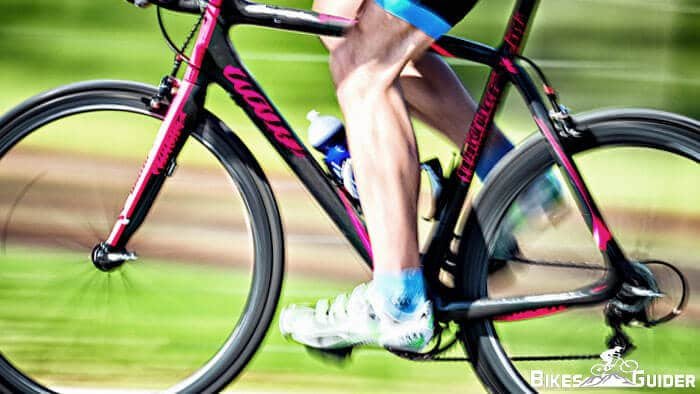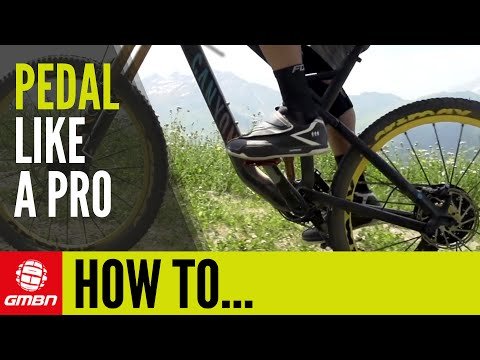How to pedal
Up-down, up-down, pedaling sure seems like an easy task. And I am also sure this is the kind of mentality that you have when it comes to cycling a bicycle. Isn’t that right? But there is more to pedaling than just bending your knees when the pedal comes up and stretching your legs when you want to push it down.
There is how you can achieve optimum pedaling without raising the risks of injury. So then this begs the question, how to improve your pedaling efficiency? Well, why don’t I help you find out exactly how to pedal like a pro.
Read below steps on bike pedaling technique & method about proper pedal stroke & less the chance of joint injury.

Read below the steps on Pedal Like a Pro
Part 1: Spotting Inefficiency in Your Pedaling
- The first part will, of course, be finding out where exactly you go wrong when it comes to pedaling. One of the best ways to do this is through a Wattbike. A Wattbike provides you with data on all your pedaling statistics including your right and left pedaling power, your imbalances among other valuable data.
- Another way is by single leg riding. When assessing yourself using this technique, listen for any clunking should your leg stop pedaling smoothly. If you hear it, then you are pedaling wrongly, and the opposite is true.
- Changing up your cadence is another excellent method to see if you fault at pedaling. If you usually ride at 85 rpm, try increasing it to 100 rpm. If you see yourself bouncing on the saddle, then your pedal strokes are inefficient.
- If you ride at a slower cadence and you find that you keep engaging the pedals now and then, then it, of course, tells you that you are always disengaging from them and this is a poor way to pedal.
Part 2: Bike Pedaling Techniques to Improving Your Pedal Efficiency
- Know your terrain. As you ride, you need to understand that different terrains will affect your pedaling. You cannot compare your pedaling on flat ground to that of when you are in a rocky place. Riding through different terrains now and then helps you learn how to adjust your pedaling to them which improves your efficiency.
- Coaching. Having an expert, train you in pedaling is an excellent way to get your pedaling rates higher. These experts will analyze you as you pedal and see where exactly it is that you go wrong. They will then advise you accordingly or make any necessary changes to your bike based on what the findings are.
- Training in the gym. I know it sounds unbelievable, but it’s true. Studies have shown that people who hit the gym are better cyclists. I believe this results from muscle building while at the gym which increases their power. Therefore, if you want to pedal better, enroll to a gym right now.
- Working for a higher cadence. A higher cadence is not hard to achieve. However, you should do this progressively. Let’s say you ride at 70rpm, start by aiming to add 10rpm and then when you achieve 80rpm, aim to add another more 10rpm.
- Work on your upstroke. Many cyclists do not know how to perform the upstroke correctly as they pedal. When doing an upstroke, do not disengage the pedal; instead, push down on the pedal producing a negating the negative torque on the other side of the pedal. This will go a long way in making you efficient on how to perform a proper pedal stroke.
Part 3: Is Your Bike to Blame?
- According to cycling experts, bikes can sometimes be the reason why your pedaling is at a low efficiency. One of the few reasons is having a saddle that’s too far forward. This results to rocking back and forth whenever you are riding your bicycle.
- If the seat is way too low, then you will experience high knee lifts and unfinished pedal strokes. This process also compresses on your diaphragm which affects your breathing leading to inefficient oxygen supply to the body. The finality is, of course, poor pedaling performance.
- Sometimes the length of the crank can be the way to your pedaling inefficiency. There is no optimum crank length. It will all depend on your legs’ unique proportions. To find out what your optimum crank length could be, have a bike fitter help you.
Tips
- Having your bike seat at the proper height where you feel comfortable improves your chances of pedaling at an optimum efficiency.
- Always check your bike to make sure that you are comfortable riding on it as this will improve your pedaling efficiency.
Warnings
- Never pull up on the pedals. This is because it interferes with your push on the other side causing a less powerful pedal. The maximum torque occurs between 12-3 O’clock. Therefore, push down on the pedal on the side that’s performing the upstroke, and you will see how well you pedal.
Question: Is there an ideal recommended RPM?
Answer: Every person is unique, and this means we all have different RPMs based on how much power we put when pedaling. Do not, therefore, struggle to achieve a certain RPM that makes you uncomfortable when pedaling. Go for one which you feel comforting when riding.
Question: No matter what I do I don’t seem to improve my pedaling. Any advice?
Answer: You can liaise with a professional to help you determine what exactly the problem could be. Perform tests on your pedaling, and by the end, you will be aware of where the fault lies.
Now at the end, You might find the proper method to pedal like a pro to improve your pedal efficiency. Now you can enjoy the bike riding without any tense of joint injury. If this guide helps you a little bit then please leave a comment to inspire me more to make this type of article in future & help the cyclist community.
Reference: DimaondBack, TheNest

